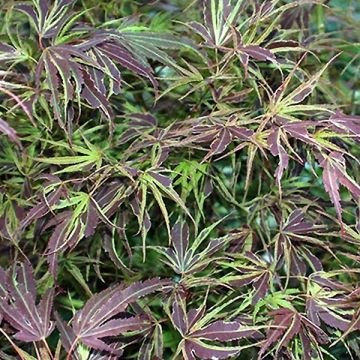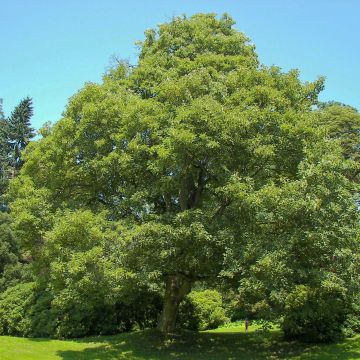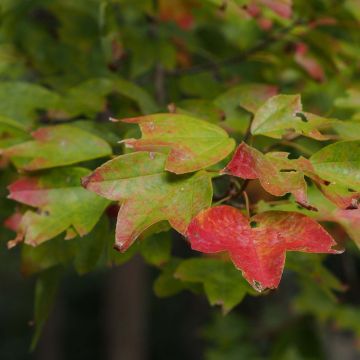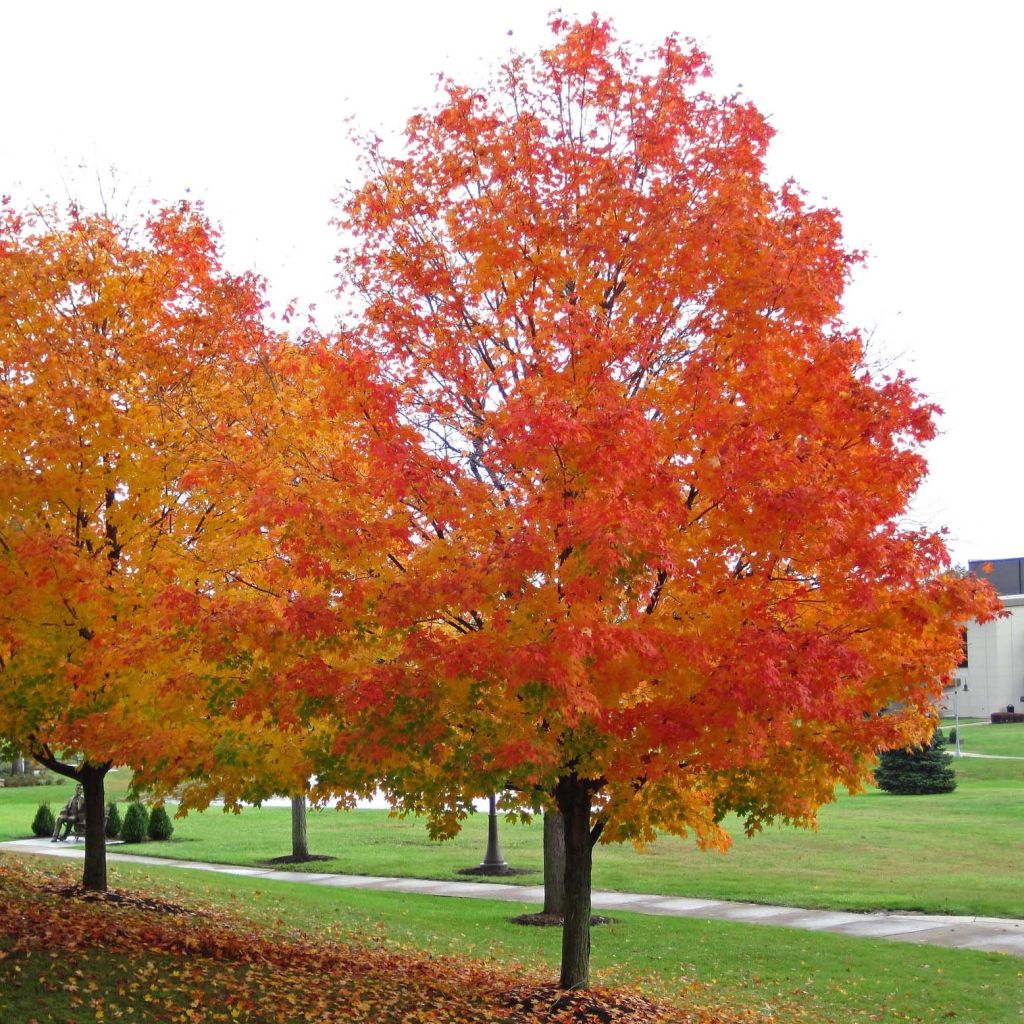

Acer saccharum - Maple


Acer saccharum - Maple
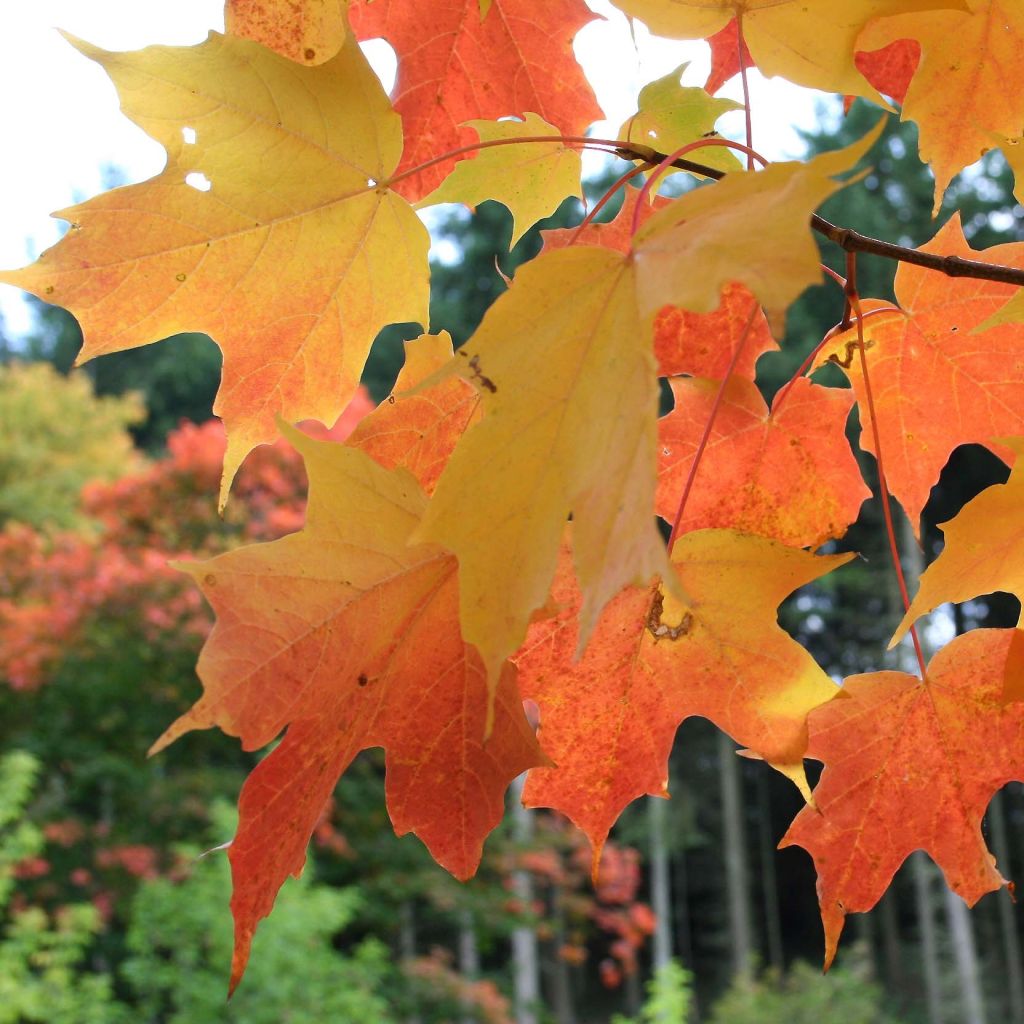

Acer saccharum - Maple
Acer saccharum - Maple
Acer saccharum
Sugar Maple, Rock Maple, Hard Maple
Received well but disappointed. We were told 1.50, 1.80 meters, but in the end it was 1.20 meters. Regards.
chantal, 17/02/2024
Special offer!
Receive a €20 voucher for any order over €90 (excluding delivery costs, credit notes, and plastic-free options)!
1- Add your favorite plants to your cart.
2- Once you have reached €90, confirm your order (you can even choose the delivery date!).
3- As soon as your order is shipped, you will receive an email containing your voucher code, valid for 3 months (90 days).
Your voucher is unique and can only be used once, for any order with a minimum value of €20, excluding delivery costs.
Can be combined with other current offers, non-divisible and non-refundable.
Why not try an alternative variety in stock?
View all →This plant carries a 24 months recovery warranty
More information
We guarantee the quality of our plants for a full growing cycle, and will replace at our expense any plant that fails to recover under normal climatic and planting conditions.
Would this plant suit my garden?
Set up your Plantfit profile →
Description
The Acer saccharum, also known as the famous 'Sugar Maple', is a tree that is widely cultivated in Canada to produce delicious maple syrup. It is a large, fast-growing tree that reaches about 20 m (65 ft 7 in) in height and 10 m (32 ft 10 in) in width. Its pyramidal to ovoid rounded habit is dense and compact. Its dark green foliage turns into beautiful autumn colours, ranging from bright yellow to coppery red. When planted alone in a large garden, it becomes majestic. It thrives in any type of soil as long as it is not too wet, and its powerful root system has enough space to develop deep and wide.
Native to Northeastern North America and Southern Canada, the Acer saccharum, also known as the 'Sugar Maple' or 'Hard Maple', is a large tree belonging to the Aceraceae family. It grows naturally in deciduous or coniferous forests where it can reach up to 40 m (131 ft 2 in) in height. Since the arrival of the first settlers in the 21st century, the Acer saccharum has been cultivated to produce maple syrup (maple sugaring), which is obtained from 'maple water' collected by drilling holes in the trunk of the tree at the end of winter.
The Acer saccharum has a spreading rounded to ovoid habit. It reaches 20 to 25 m (65 ft 7 in to 82 ft) in height and 10 to 12 m (32 ft 10 in to 39 ft 5 in) in spread. The deciduous foliage is composed of large leaves deeply divided into 3 to 5 lobes, with a dark green colour and a paler underside. They measure 8 to 20 cm (3.1 to 7.9 in) in length and the same, or even greater, in width. In autumn, they blaze with spectacular colours, ranging from golden yellow to bright red and orange. The flowering occurs in March-April, before the leaves appear. The small yellowish-green flowers are fragrant and arranged in pendulous terminal clusters. The fruiting, in the form of winged fruits called samaras, is abundant. It only appears on specimens at least 20 years old and is highly appreciated by birds and small mammals. The bark of the branches is a brown-green in colour, becoming grey and vertically fissured as it ages.
The Acer saccharum is a vigorous tree with fast growth, perfectly resistant to severe frosts. It thrives in deep and well-drained moist soil. It prefers slightly acidic soils and dislikes excessive limestone and stagnant water. A well-established specimen can tolerate temporarily dry soil. Its root system spreads considerably in depth and width, including at the surface. When planted alone in a park or a large garden, it becomes majestic. It can also be planted in rows along large alleys, providing shade in summer and illuminating with its colours in autumn.
Good to know: The Acer saccharum is often confused with the Acer platanoides (Norway Maple). They can be differentiated by crushing the leaves: the leaves of A. saccharum produce clear and transparent sap, unlike the white sap of A. platanoides.
Acer saccharum - Maple in pictures




Plant habit
Flowering
Foliage
Botanical data
Acer
saccharum
Aceraceae
Sugar Maple, Rock Maple, Hard Maple
North America
Other Acer - Maple tree
View all →Planting and care
The young plant of Acer saccharum should be planted in spring or autumn in fertile, deep and fresh soil in a partially shaded or sunny position, but not scorching. It does not appreciate excessively chalky soils or stagnant moisture, and requires a sufficiently deep soil to accommodate its powerful root system. Beware of strong winds. Keep the soil moist during the first two summers after planting. Mulching can be beneficial to maintain good soil moisture. Formative pruning is necessary for young plants, and then every 3 years to balance the branches and maintain a harmonious habit. Do not prune after December as sap rises very early.
Planting period
Intended location
Care
Planting & care advice
-
, onOrder confirmed
Reply from on Promesse de fleurs
Similar products
Haven't found what you were looking for?
Hardiness is the lowest winter temperature a plant can endure without suffering serious damage or even dying. However, hardiness is affected by location (a sheltered area, such as a patio), protection (winter cover) and soil type (hardiness is improved by well-drained soil).

Photo Sharing Terms & Conditions
In order to encourage gardeners to interact and share their experiences, Promesse de fleurs offers various media enabling content to be uploaded onto its Site - in particular via the ‘Photo sharing’ module.
The User agrees to refrain from:
- Posting any content that is illegal, prejudicial, insulting, racist, inciteful to hatred, revisionist, contrary to public decency, that infringes on privacy or on the privacy rights of third parties, in particular the publicity rights of persons and goods, intellectual property rights, or the right to privacy.
- Submitting content on behalf of a third party;
- Impersonate the identity of a third party and/or publish any personal information about a third party;
In general, the User undertakes to refrain from any unethical behaviour.
All Content (in particular text, comments, files, images, photos, videos, creative works, etc.), which may be subject to property or intellectual property rights, image or other private rights, shall remain the property of the User, subject to the limited rights granted by the terms of the licence granted by Promesse de fleurs as stated below. Users are at liberty to publish or not to publish such Content on the Site, notably via the ‘Photo Sharing’ facility, and accept that this Content shall be made public and freely accessible, notably on the Internet.
Users further acknowledge, undertake to have ,and guarantee that they hold all necessary rights and permissions to publish such material on the Site, in particular with regard to the legislation in force pertaining to any privacy, property, intellectual property, image, or contractual rights, or rights of any other nature. By publishing such Content on the Site, Users acknowledge accepting full liability as publishers of the Content within the meaning of the law, and grant Promesse de fleurs, free of charge, an inclusive, worldwide licence for the said Content for the entire duration of its publication, including all reproduction, representation, up/downloading, displaying, performing, transmission, and storage rights.
Users also grant permission for their name to be linked to the Content and accept that this link may not always be made available.
By engaging in posting material, Users consent to their Content becoming automatically accessible on the Internet, in particular on other sites and/or blogs and/or web pages of the Promesse de fleurs site, including in particular social pages and the Promesse de fleurs catalogue.
Users may secure the removal of entrusted content free of charge by issuing a simple request via our contact form.
The flowering period indicated on our website applies to countries and regions located in USDA zone 8 (France, the United Kingdom, Ireland, the Netherlands, etc.)
It will vary according to where you live:
- In zones 9 to 10 (Italy, Spain, Greece, etc.), flowering will occur about 2 to 4 weeks earlier.
- In zones 6 to 7 (Germany, Poland, Slovenia, and lower mountainous regions), flowering will be delayed by 2 to 3 weeks.
- In zone 5 (Central Europe, Scandinavia), blooming will be delayed by 3 to 5 weeks.
In temperate climates, pruning of spring-flowering shrubs (forsythia, spireas, etc.) should be done just after flowering.
Pruning of summer-flowering shrubs (Indian Lilac, Perovskia, etc.) can be done in winter or spring.
In cold regions as well as with frost-sensitive plants, avoid pruning too early when severe frosts may still occur.
The planting period indicated on our website applies to countries and regions located in USDA zone 8 (France, United Kingdom, Ireland, Netherlands).
It will vary according to where you live:
- In Mediterranean zones (Marseille, Madrid, Milan, etc.), autumn and winter are the best planting periods.
- In continental zones (Strasbourg, Munich, Vienna, etc.), delay planting by 2 to 3 weeks in spring and bring it forward by 2 to 4 weeks in autumn.
- In mountainous regions (the Alps, Pyrenees, Carpathians, etc.), it is best to plant in late spring (May-June) or late summer (August-September).
The harvesting period indicated on our website applies to countries and regions in USDA zone 8 (France, England, Ireland, the Netherlands).
In colder areas (Scandinavia, Poland, Austria...) fruit and vegetable harvests are likely to be delayed by 3-4 weeks.
In warmer areas (Italy, Spain, Greece, etc.), harvesting will probably take place earlier, depending on weather conditions.
The sowing periods indicated on our website apply to countries and regions within USDA Zone 8 (France, UK, Ireland, Netherlands).
In colder areas (Scandinavia, Poland, Austria...), delay any outdoor sowing by 3-4 weeks, or sow under glass.
In warmer climes (Italy, Spain, Greece, etc.), bring outdoor sowing forward by a few weeks.

































